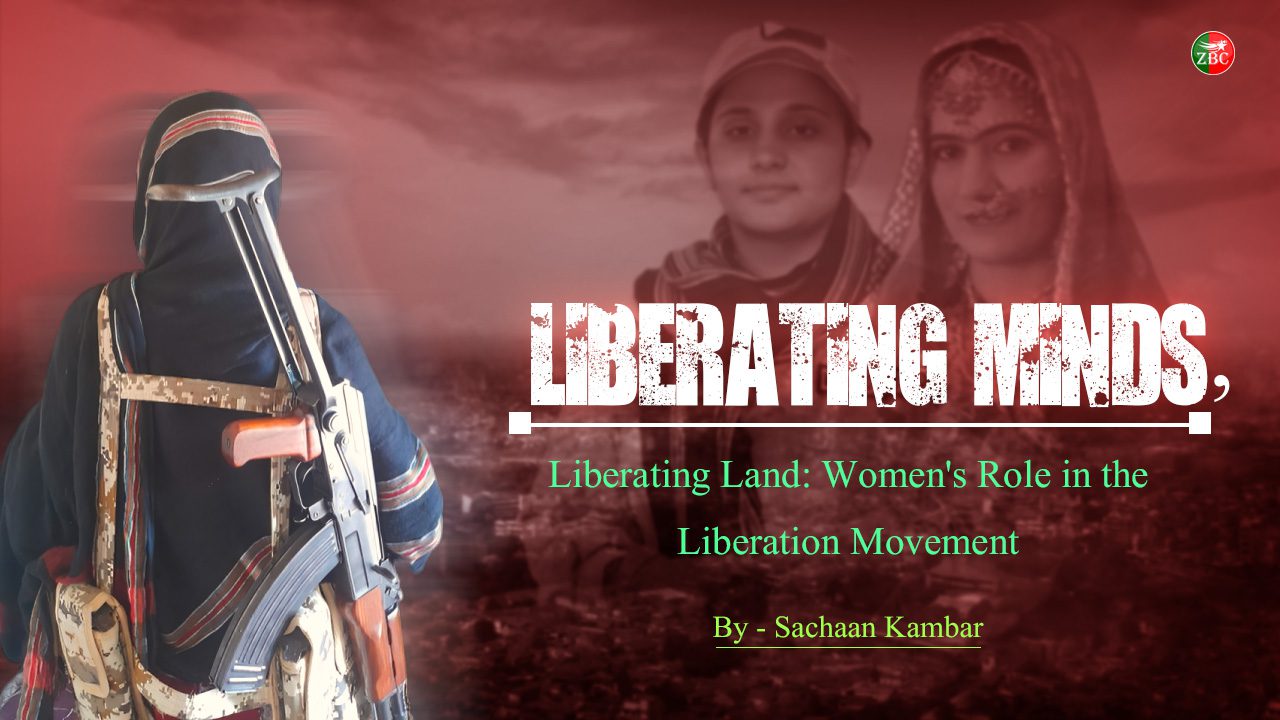The Baloch liberation movement, seeking independence from Pakistan, has undergone a significant transformation in recent years, marked by the increasing involvement of women in various capacities. This shift not only challenges traditional gender roles within Baloch society but also underscores the evolving nature of resistance against perceived oppression. The Baloch people, who have a long history of resisting foreign domination, now see women stepping into roles, thereby redefining the struggle for freedom.
When Pakistan forcefully annexed Balochistan in 1948, the Baloch people began a prolonged armed resistance against the Pakistani state. This resistance has since evolved into a broader liberation movement aimed at raising awareness among the Baloch about their plight. Initially, the Baloch were hindered by low literacy rates and a lack of political consciousness. However, organizations like the Baloch Students Organization Azad (BSO Azad) played a pivotal role in educating the populace, promoting a unified Baloch identity over tribal affiliations, and emphasizing the importance of education in the fight for freedom.
The BSO’s efforts to integrate women into the freedom movement have been particularly noteworthy. Historically, Baloch society had limited educational opportunities for women. However, the BSO’s advocacy for women’s involvement in the liberation struggle has led to a significant increase in educated women participating in the movement. These women have become vital in spreading the message of resistance, both through education and direct action.
The Baloch women’s involvement in the liberation movement is not unprecedented. Baloch history is replete with examples of women who have played significant roles in armed resistance. The stories of legendary figures like Mir Chakar Rind’s sister, Banari Baloch, who led a battle in India, and the sisters of Dad Shah, who fought against the Iranian military, highlight the long-standing tradition of Baloch women’s courage and resilience. These historical precedents have inspired contemporary Baloch women to take up arms and join the struggle for independence.
In the current phase of the Baloch liberation movement, women are seen as essential to the success of the struggle. Educated women are using media to amplify the Baloch cause globally, drawing attention to the oppression faced under Pakistani rule. The rise of digital media has provided a platform for Baloch women to counter state-controlled narratives and highlight the human rights abuses committed by the Pakistani military.
Baloch women have also played a crucial role in guerrilla warfare. Their ability to blend into civilian populations makes them effective in carrying out operations against Pakistani military targets. The active participation of women has added a new dimension to the Baloch resistance, making it more difficult for the Pakistani state to suppress the movement.
The stories of women like Summayia Baloch, a member of the Balochistan Liberation Army’s Majeed Brigade unit who carried out a self-sacrificing attack in Turbat, exemplify the growing prominence of women in the armed struggle. Summayia’s actions were not driven by personal vendettas but by a deep-seated desire to see Balochistan free from Pakistani occupation. Her sacrifice and the sacrifices of other women in the movement symbolize the intense commitment to the cause of independence.
The involvement of women in the Baloch liberation movement also serves to challenge the traditional patriarchal norms of Baloch society. By taking up roles in armed resistance, women are asserting their agency and breaking free from the confines of societal expectations. This shift has not been without its challenges, as many within Baloch society still adhere to conservative views on gender roles.
However, the courage and determination of Baloch women in the face of these challenges have paved the way for greater acceptance of their contributions to the liberation struggle.
Moreover, the Pakistani state’s attempts to portray the Baloch resistance as illegitimate and driven by external forces have been undermined by the active participation of women. The Pakistani government has long sought to delegitimize the Baloch liberation movement by labeling it as a terrorist insurgency backed by foreign powers. However, the involvement of Baloch women, driven by their own experiences of oppression and their desire for freedom, challenges this narrative and highlights the indigenous nature of the resistance.
The commitment to self-sacrificing attacks by Baloch women has drawn international attention to the Baloch cause. Women in other movements, such as the Kurdish struggle against Turkish oppression, have also employed similar tactics.
The willingness of Baloch women to make the ultimate sacrifice has inspired admiration and solidarity from other colonized nations around the world.One of the most notable figures in the recent history of the Baloch liberation movement is Shari Baloch. Shari, a highly educated woman with a background in teaching, became the first female Fidayeen of the Baloch liberation struggle. On April 26, 2022, she carried out a self-sacrificing attack targeting Chinese nationals in Karachi. This attack, which resulted in the death of three Chinese teachers, was a significant act of defiance against both the Pakistani state and its Chinese allies, who are seen as complicit in the exploitation of Balochistan’s resources.
Shari Baloch’s decision to become a Fidayeen was not taken lightly. It was rooted in a profound sense of duty to her people and a deep-seated belief in the necessity of resistance against oppression. Her actions were a direct response to the injustices faced by the Baloch people, including enforced disappearances, extrajudicial killings, and economic exploitation. Shari’s sacrifice brought international attention to the Baloch struggle and highlighted the extreme measures that Baloch are willing to take to achieve their goals.
Shari Baloch’s story also challenges the narrative that women in conservative societies like Balochistan are passive or subservient. Her decision to take such a drastic step demonstrates the agency and autonomy of Baloch women in the liberation movement.
The targeting of Chinese nationals in Shari Baloch’s Fidayeen attack also points to the broader geopolitical implications of the Baloch liberation movement. The China-Pakistan Economic Corridor (CPEC), a flagship project of China’s Belt and Road Initiative, has been heavily criticized by Baloch nation for its role in the exploitation of Balochistan’s resources and the displacement of local Baloch people. By targeting Chinese nationals, Shari Baloch’s attack sent a clear message to both Pakistan and China about the costs of their exploitative policies in Balochistan.
The international community’s response to the Baloch liberation movement has been mixed. While human rights organizations have documented abuses by the Pakistani military, geopolitical interests often overshadow support for the Baloch cause.
However, the growing visibility of Baloch women’s involvement in the resistance has the potential to galvanize international solidarity and pressure on Pakistan to address the legitimate grievances of the Baloch people.
In conclusion, the increasing involvement of women in the Baloch liberation movement marks a significant evolution in the struggle for Balochistan’s independence. By stepping into the Baloch armed struggle, Baloch women are not only redefining gender norms within their society but also adding a powerful new dimension to the resistance against Pakistani oppression. Their courage, resilience, and sacrifices underscore the determination of the Baloch people to achieve freedom and justice.
The stories of these women challenge the Pakistani state’s narratives, highlight the indigenous nature of the Baloch resistance, and draw international attention to the ongoing struggle for Balochistan’s independence. The contributions of women like Shari Baloch and Summayia Baloch serve as powerful reminders of the unyielding spirit of the Baloch people and their unwavering commitment to their cause.
The writer can be reach on Twitter @SachaanKambar



